This simple Spring recipe is full of fresh flavors!
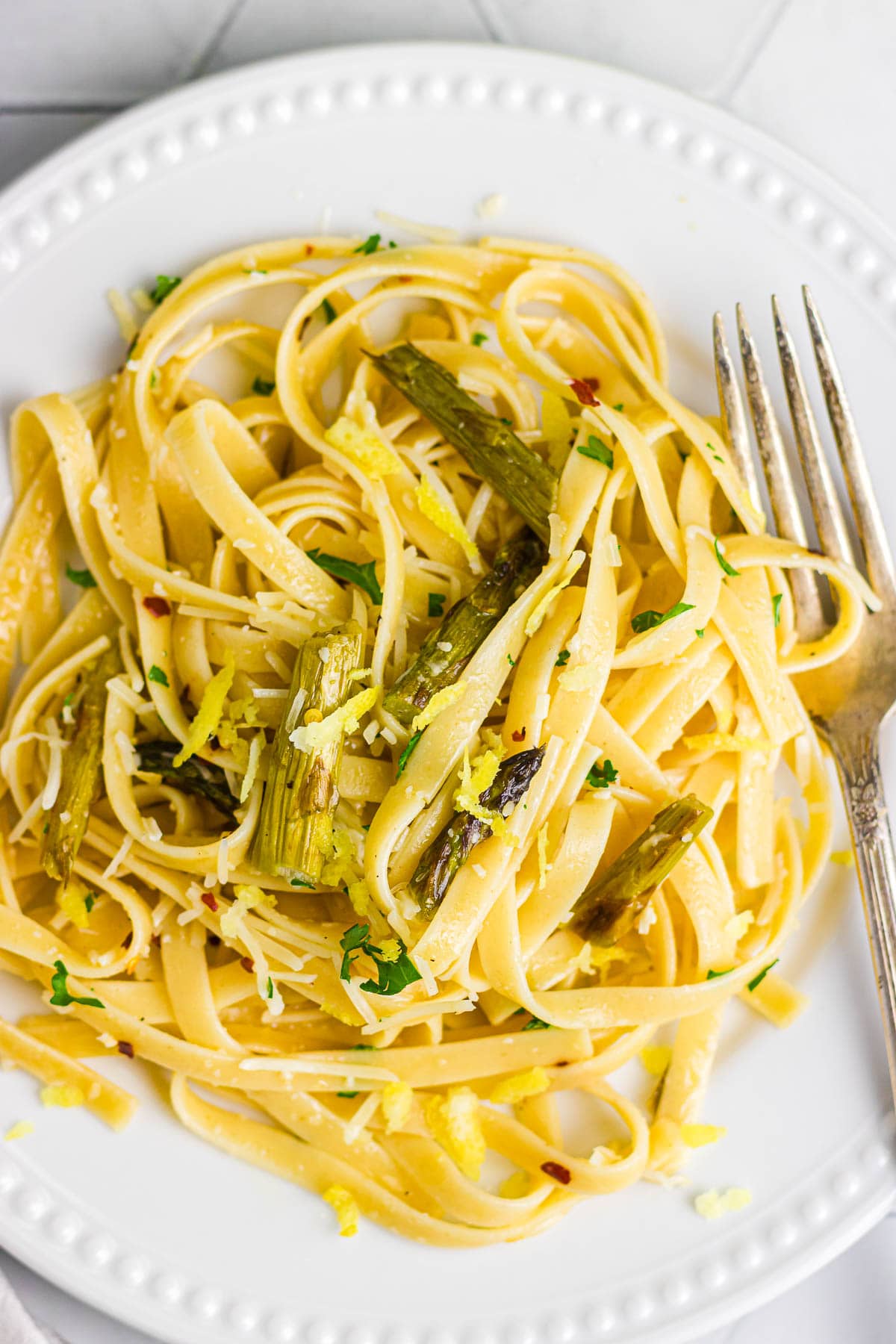
Save this recipe by clicking on the ❤️ heart on the right-hand side of the screen or in the recipe card.
Table of Contents
🗝️ Key takeaways
- Lemon garlic asparagus pasta is an easy pasta dish with fresh, simple ingredients that’s on the dinner table in less than 30 minutes!
- It’s a great dish to serve with a green salad, grilled or baked chicken breasts, garlic bread, or roasted veggies for dinner any night of the week.
- Don’t drain pasta all the way—keep a cup of the pasta water in reserve to make the sauce later!
Asparagus season is coming, and y’all know by now that asparagus is my favorite spring vegetable!
The best part of this lemon asparagus pasta recipe is the creamy sauce bursting with bright spring flavors from the fresh garlic, lemon zest, and fresh lemon juice.
🧾 Ingredients
This is an overview of the ingredients. You'll find the full measurements and instructions in the green recipe card (printable) at the bottom of the page.
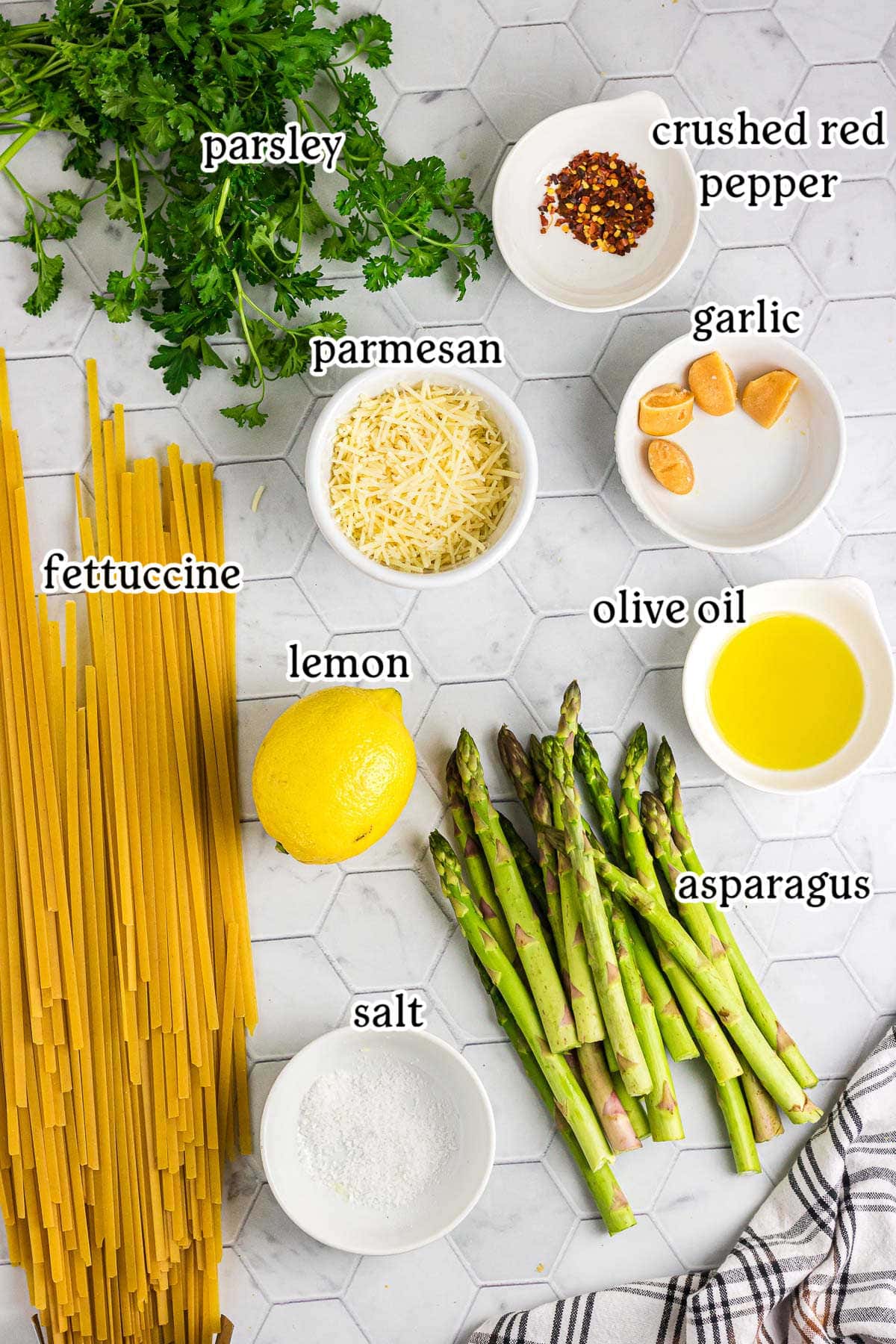
📖 Variations
- Instead of fettuccine, you can use linguine pasta, bow tie pasta, penne pasta, or any other type you like.
- Prefer a dinner with meat? Toss in some pre-cooked, grilled chicken strips or microwave some frozen chicken meatballs for a full meal in no time.
- If you don’t have fresh garlic, a teaspoon of garlic powder will do in a pinch.
- You can omit the red pepper flakes if you’re not a fan of spicy food.
- Add a glug of white wine to enhance the flavors in this lemon garlic pasta sauce—then save the rest to sip with dinner!
- Feel free to add a teaspoon of Italian seasoning to your asparagus pasta in addition to the kosher salt and black pepper.
🍴 Equipment
- Baking sheet
- Large pot
- Skillet
🥫 How to store leftover asparagus lemon garlic pasta
Store leftover pasta in an airtight container in the fridge for up to four days. It makes a great lunch—your coworkers (or kids!) will be jealous.
You can serve asparagus pasta hot, cold, or at room temperature—you do you! Reheat asparagus pasta with a splash of water or broth on the stovetop or in the microwave.
I don’t recommend freezing this cooked pasta dish. Freezing and thawing will change the texture of the asparagus and sauce.
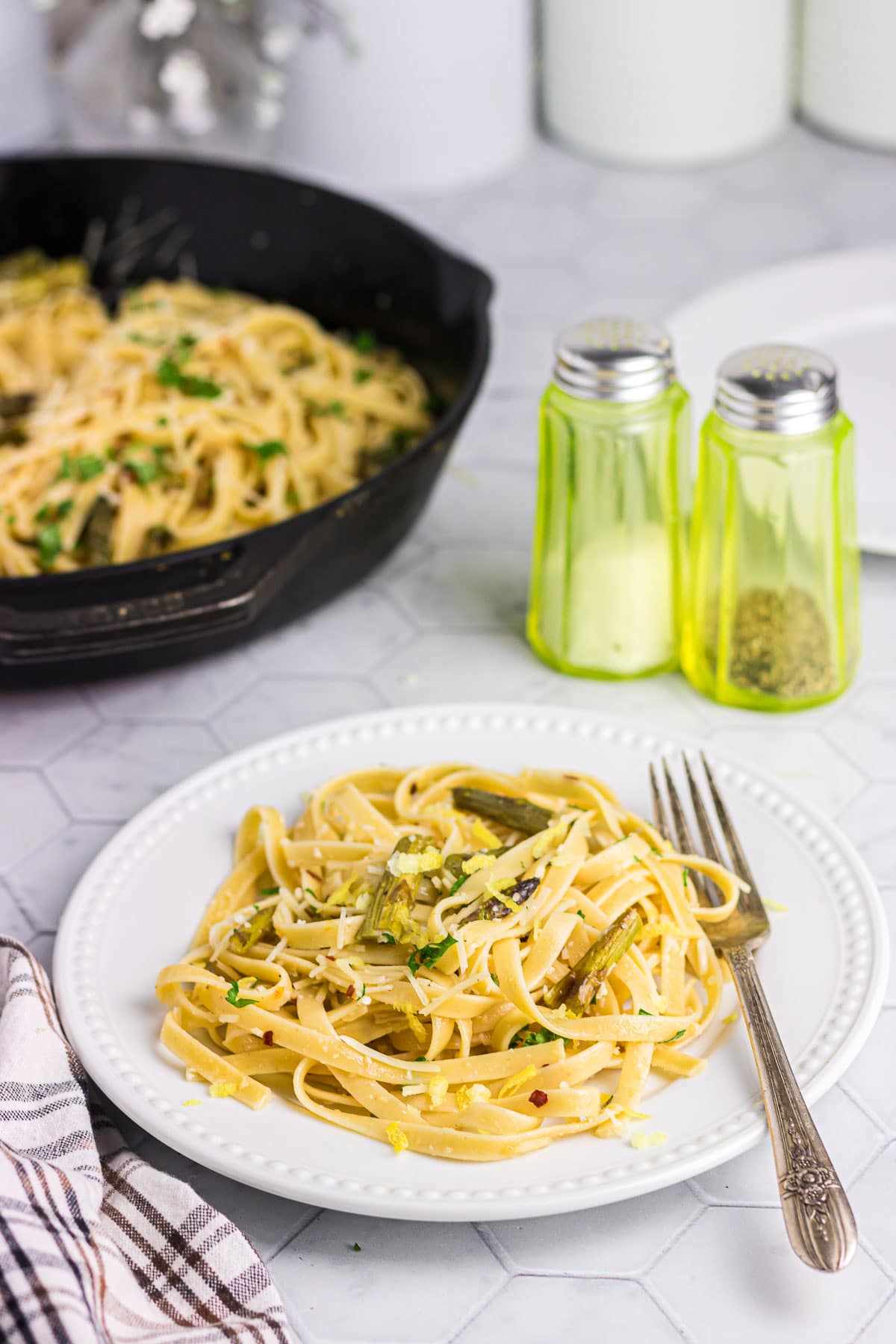
Expert tip:
Don't forget to reserve a cup of pasta water to make the lemon cream sauce. (I like to put a bowl underneath the pasta strainer in my sink.) The starch content in the cooking water naturally helps the sauce thicken and emulsify—or "come together smoothly" in kitchen-talk.
💭 Things to know
- Save prep time and buy fresh asparagus from the grocery store with the woody ends already removed.
- Hold each asparagus spear at both ends and gently bend it toward the bottom until the woody tips snap off, or cut them off with a sharp knife.
- Buy a package of pasta from the grocery store or use my Homemade Pasta Dough Recipe to make it from scratch. It’s easier than you think!
- It’s easy to make this lemon pasta side dish gluten-free—just use gluten-free pasta.
- You need to stir the asparagus mixture vigorously over medium-high heat until the sauce thickens and comes together smoothly. You may need to use a little bit more pasta water to get the right consistency.
- The sauce is meant to be light and refreshing, so I don’t recommend using heavy cream.
- Garnish your vegetarian pasta with a pat of cold butter, extra shredded parmesan cheese, and fresh herbs like chopped fresh basil and fresh parsley.
👩🍳 FAQs
If you’re not a fan of asparagus, you can swap it out with another hearty green vegetable like green beans, peas, or broccoli florets. However, it won't be asparagus pasta without the asparagus!
Choose a pasta shape that can hold onto creamy pasta sauces, such as fettuccine, linguine pasta, bow tie pasta (farfalle), penne pasta, campanelle, or gemelli.
Bring a pot of salted water to a boil. Cook fresh pasta in boiling water for 2-3 minutes. Follow the package instructions (usually 9-11 minutes) for dried pasta from the grocery store. You know you have al dente pasta when it’s tender with a bit of chew—not too hard, not too soft.
You can, but you need to thaw it completely and pat it dry first. Frozen asparagus holds extra water that needs to be drained before roasting. Otherwise, your asparagus will steam in the oven and get soggy rather than crisp and tender.
Sure! Saute the asparagus in olive oil in a large skillet (the same one you'll use later) over medium heat. The asparagus is done cooking when it’s slightly browned and fork-tender, about 8-10 minutes.
It's likely because you used frozen asparagus that wasn’t thawed and dried, your oven temperature was too low, you cooked it too long, or you overcrowded the asparagus.
The best way to make tender asparagus in the oven is to roast it at a high temperature (450 F) and arrange it in a single layer without overlaps. Use an oven thermometer to make sure your oven is getting hot enough! And, remove it from the oven as soon as it's fork-tender.
Nope, not really! First of all, store-bought lemon juice contains preservatives and other ingredients that make it taste bitter and artificial. Always use fresh lemon juice in lemony pasta recipes. Secondly, you need a whole lemon for both the juice and the zest.
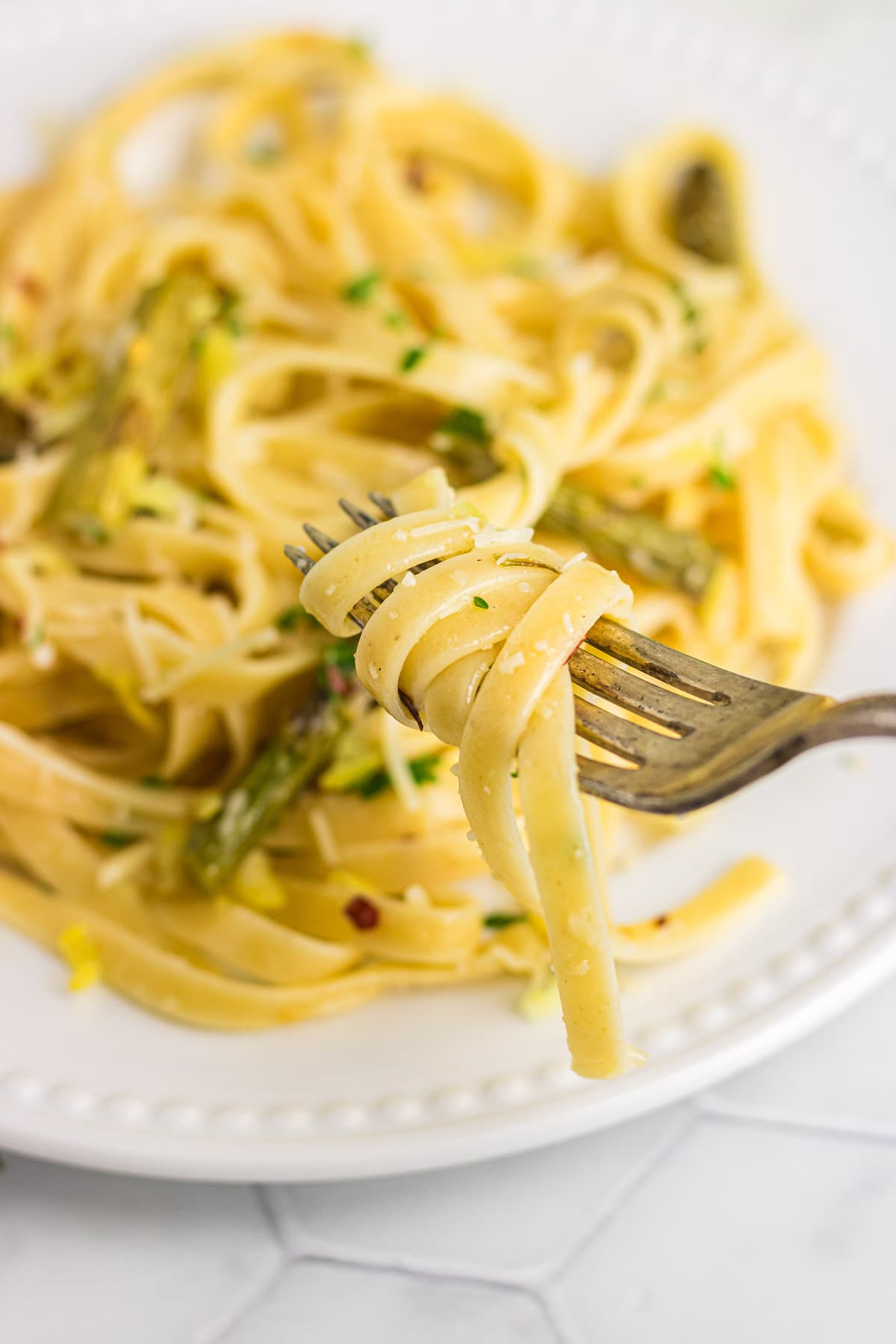
📚 Related recipes
- Ready in just 30 minutes, One-Pot Chicken Alfredo with Peas is easy, cheesy, and creamy—the ultimate comfort food!
- Made with parmesan cheese, mushrooms, and a creamy marinara sauce, Pasta con Broccoli is a great way to turn broccoli haters into fans!
- 15-minute Pasta Fresca is a simple recipe full of summer flavor from fresh tomatoes, onions, spinach, basil, and lots of parmesan cheese, of course!
🍽️ Serve with...
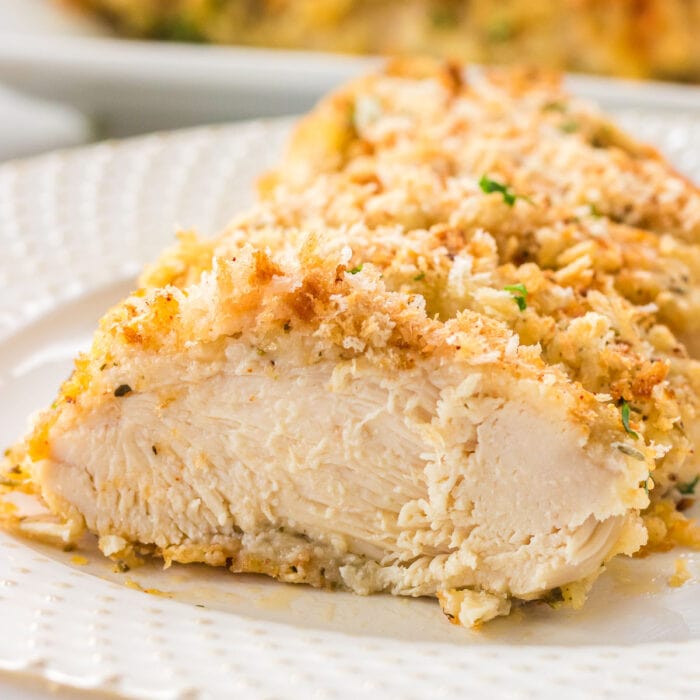
Crispy Baked Garlic Parmesan Chicken adds a delicious boost of extra protein to this great meal while staying true to the garlic lemon flavors of your asparagus pasta!
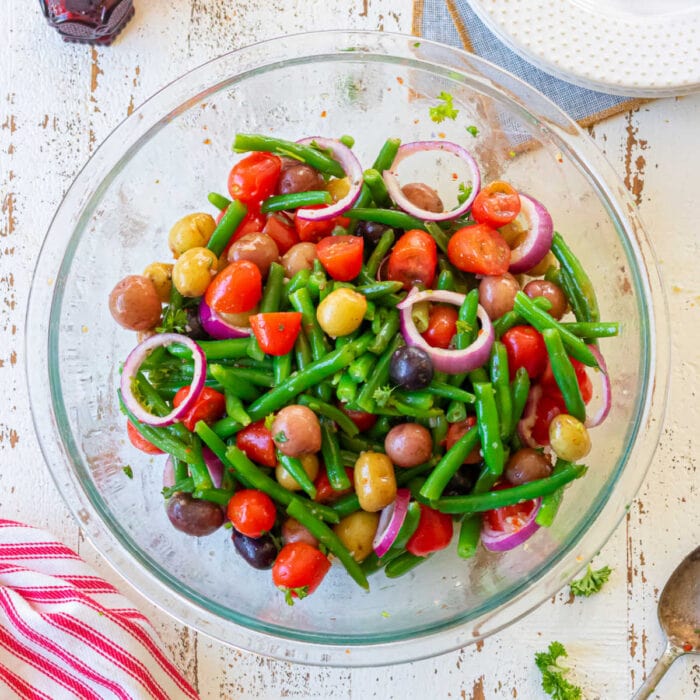
Italian Green Bean Salad is a fresh mix of crisp green beans, cherry tomatoes, red onions, and baby potatoes marinated in zesty Italian dressing.
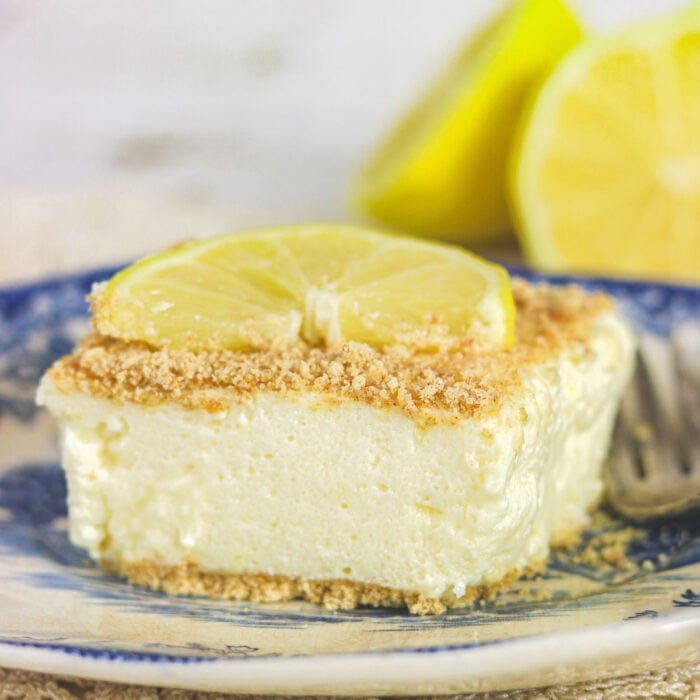
No-Bake Lemon Cheesecake is a tried-and-true vintage recipe. It's light, creamy, and refreshing—not dense or too rich like a baked lemon cheesecake filling is.
📞 The last word
Y'all, I love pasta for so many reasons but one big one is that it's so quick and easy to put together. This recipe is fabulous with some grilled shrimp or leftover grilled chicken tossed in, or just serve it as is for a light lunch or side.
If you click on the number of servings in the recipe card, you can adjust the measurements up or down for the exact number of servings you need.
If you love this recipe, please comment below and give it 5 stars! ⭐️⭐️⭐️⭐️⭐️
📖 Recipe
Lemon Asparagus Pasta
Print Pin Recipe Save Recipe Rate RecipeIngredients
- 1 pound fettuccine
- ¼ cup extra-virgin olive oil
- 1 ½ pounds asparagus, trimmed and cut
- 4 garlic cloves, minced
- 1 lemon, zested and cut and half
- ½ teaspoon crushed red pepper flakes
- 2 ounces Parmesan, plus more for serving
Instructions
- Trim and cut asparagus.
- Toss in 2 tablespoons of the olive oil and sprinkle with kosher salt and pepper.
- Roast in the 450℉ oven for 5 to 10 minutes or until cooked through.
- Cook pasta in a large pot of boiling salted water, stirring occasionally, until al dente.
- Drain, reserving 1 cup pasta cooking liquid.
- Meanwhile, heat oil in a large skillet until shimmering.
- Add asparagus, garlic, lemon zest, and red pepper flakes and cook, stirring, about 30 seconds.
- Add drained pasta to the skillet with asparagus mixture and return to medium-high heat.
- Squeeze juice from lemon into skillet and add 2 ounces Parmesan and 1 cup reserved pasta cooking liquid.
- Cook, tossing vigorously and adding more pasta cooking liquid if needed, until sauce is creamy and emulsified and pasta is coated, about 1 minute.
- Taste and season with more salt if needed.
- Top with parmesan.
Notes
- Hold each asparagus spear at both ends and gently bend it toward the bottom until the woody tips snap off, or cut them off with a sharp knife.
- It’s easy to make this lemon pasta side dish gluten-free—just use gluten-free pasta.
Nutrition Facts
Nutrition information is estimated as a courtesy. If using for medical purposes, please verify information using your own nutritional calculator. Percent Daily Values are based on a 2000 calorie diet.
This recipe has been tested several times. If you choose to use other ingredients, or change the technique in some way, the results may not be the same.

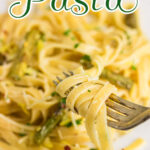
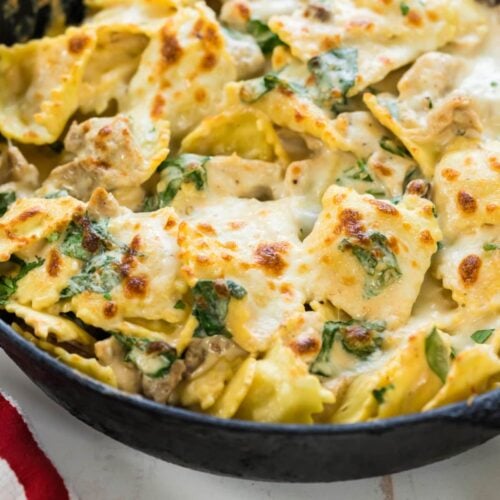

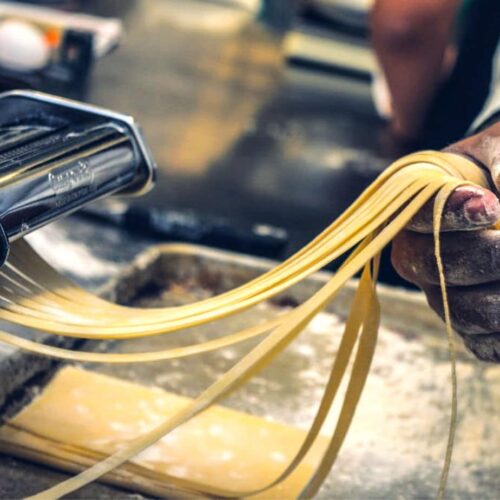
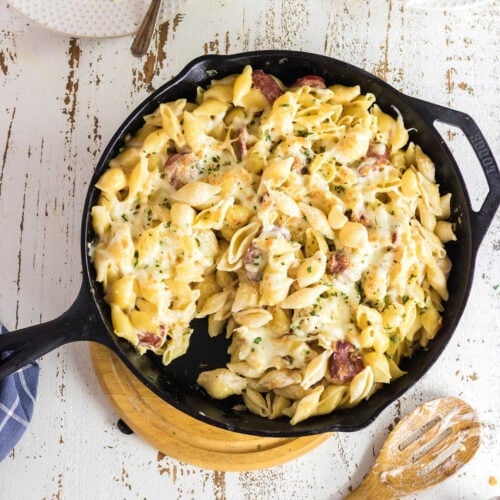
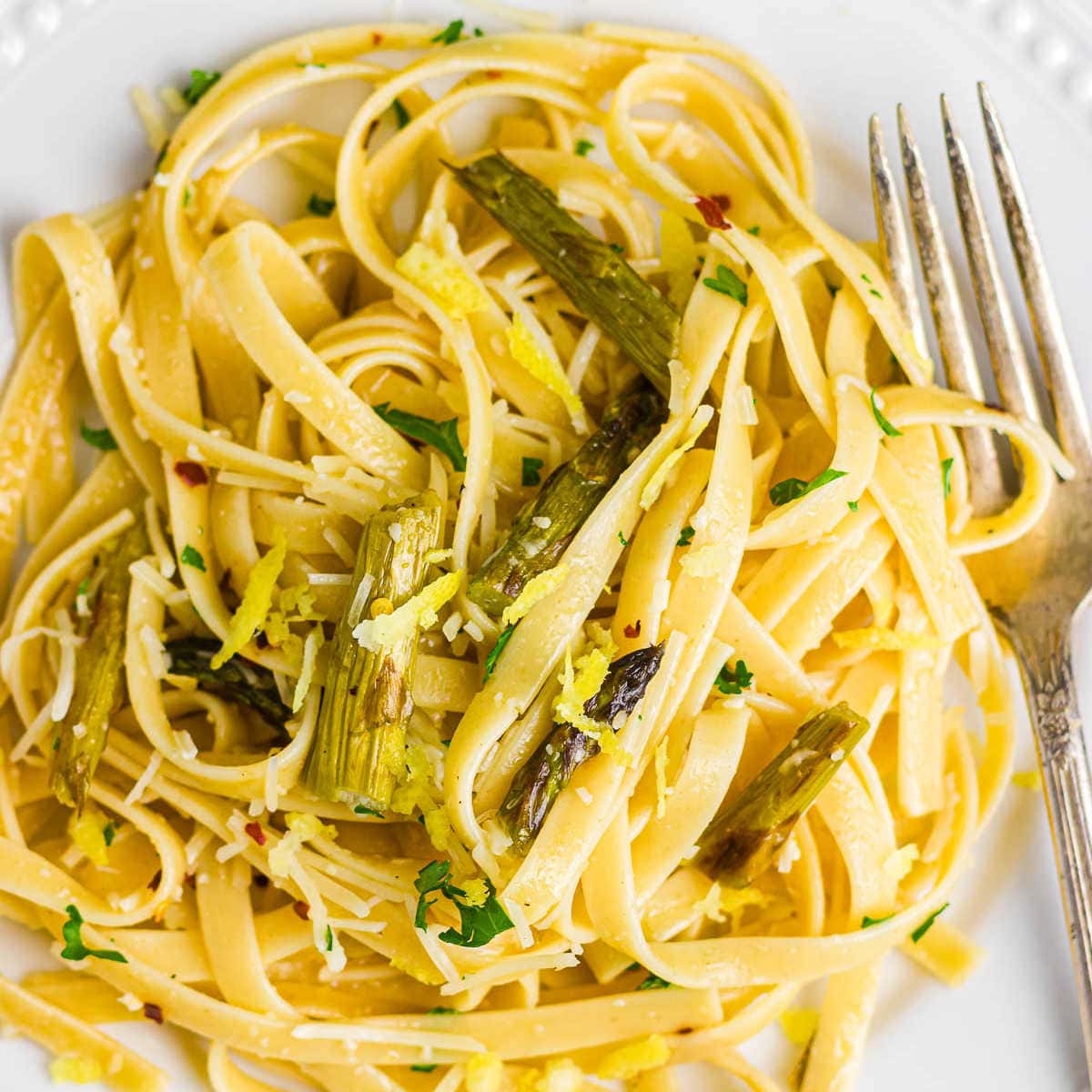
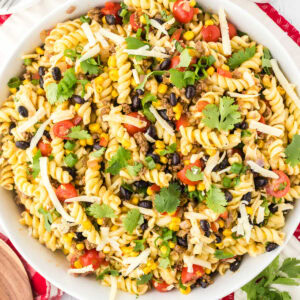
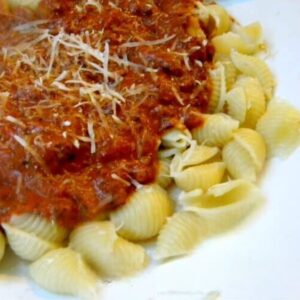
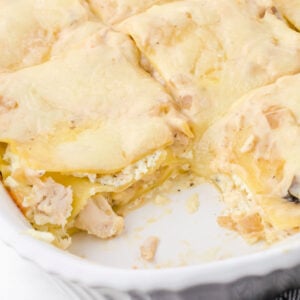
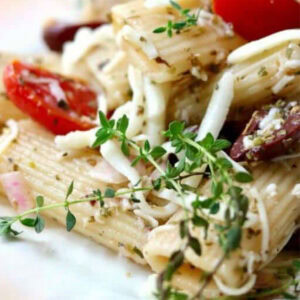
Comments
No Comments